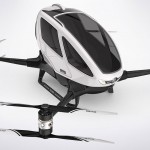5 business aviation predictions for 2018
So another new year is here, and it’s a time to look both backwards and forwards.
We’re reflecting on 2017 – with the release of our Annual Edition of our Private Jet Charter Trends Report. This uses data from thousands of searches and booked flights, to show trends for the whole year.
And looking ahead, 2018 promises to be an interesting year indeed – here at PrivateFly and in our industry. Here are some of the key developments we’re expecting to see over the next 12 months.
1. More industry growth – led by charter
In 2017, we saw more business aviation growth than at any time since the financial crisis. Flight activity was up 4% year-on-year in Europe, with charter (rather than outright or fractional ownership) the driving force of this market growth.
At PrivateFly our growth was even more dramatic (up 51% year-on-year), with tech-driven charter services like ours becoming more and more attractive to both existing and new business aviation customers. We also saw our spend per flight go up overall by 19.7% on in 2017, as customers were flying further and on larger jets.
We expect to see industry growth continue in 2018 as awareness and visibility of business jet charter continues to grow.

2. Private jet users will get younger
Many people assume that the typical private jet customer is 50+, but that’s not the case these days. In 2017, we saw the average age of our private jet passenger drop to below 40 for the first time, and we expect this trend to continue into 2018.

While business aviation caters to all generations, as Millennials continue to enter the workforce, this younger generation will become the next private jet users. And these users want more unique choices, customisation, personalisation – and above all – to do it all through bespoke technology.
3. Increased industry consolidation – including the charter broker segment
Increasing consolidation of businesses within our industry has been a key theme over the past few years, from manufacturers; through to aircraft operators; FBO chains; and industry suppliers.
And in 2018 I think we’ll also see more M&A activity with charter brokers. Our segment is very fragmented and both the customer and the industry would benefit from this being less so. The combined buying power of mega brokers is on the horizon.
Read more: PrivateFly accelerate growth with takeover of Bird Dog Jet
4. The rise of blockchain financial technology
Payment transactions is another area ripe for disruption in our industry 2018, and blockchain financial technology has the potential to become a much more prominent solution.

Payment by bitcoin (and etherium and others) may still be niche, but its popularity is growing rapidly. PrivateFly was the world’s first private jet company to offer payment in bitcoin back in 2014 and we have since seen demand grow significantly. (Read more: Demand is growing for bitcoin payment.)
Cryptocurrency transactions offer major efficiency benefits and by this time next year, I think we’ll have seen big strides forward in both adoption and processes.
5. PC-24 to build momentum in the charter sector
At the end of 2017, the Pilatus PC-24 was certified by both the FAA and EASA. With deliveries being made already, it’s just a matter of time before it’s available for charter and we expect it to be just as popular as its hangar mate, the Pilatus PC-12.
The PC-24 is able to access unpaved and even grass runways just like the PC-12 – but it also has great appeal for those using regular runways. So the potential is exciting indeed.
With its closest rival the highly-successful Embraer Phenom 300 (the best-selling new business jet in the world over the past few years) a fascinating battle looks set to play out between these two aircraft in 2018.
Stay tuned to PrivateFly’s weekly newsletter for more industry news and views throughout 2018.
Related content

Bombardier expands the boundary-breaking Global family

Do all private jets have Wi-Fi?



